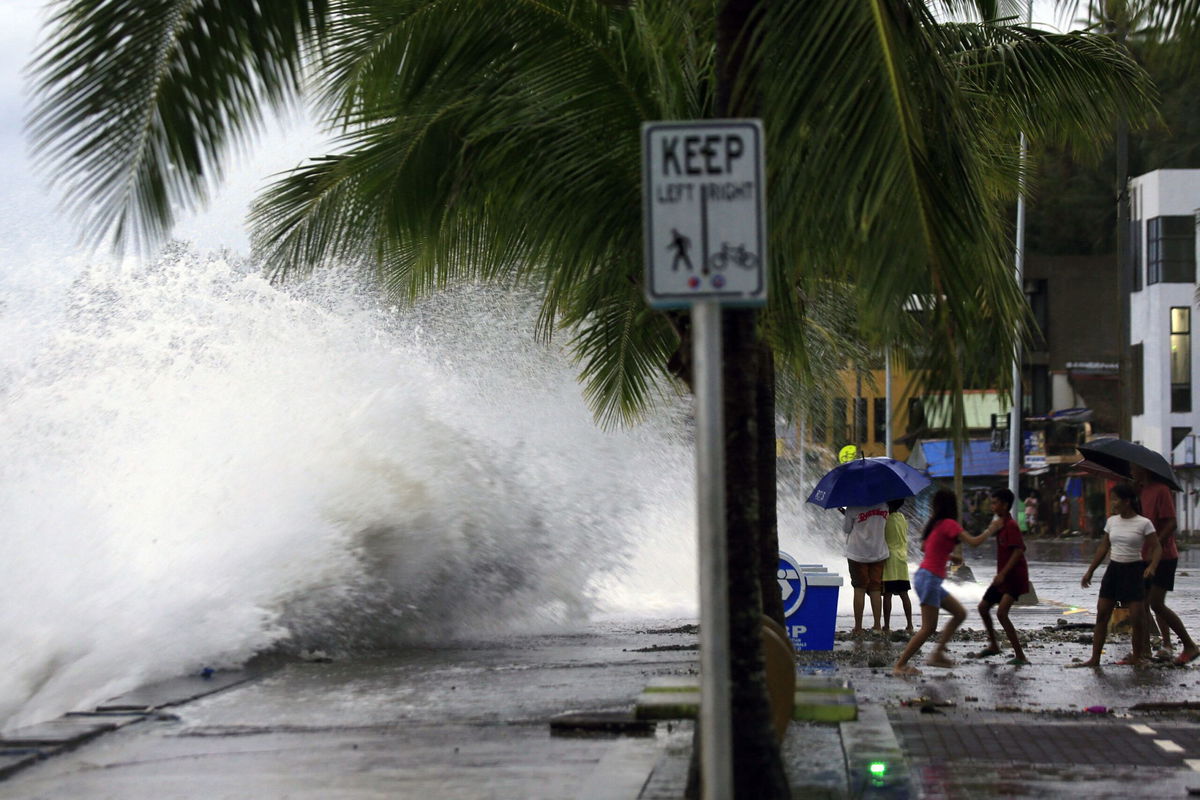Weary Philippines cleans up after Super Typhoon Man-yi becomes fourth major storm to hit in the past fortnight

Hundreds of thousands of people were evacuated from their homes as others made preparations for the typhoon ahead of its landfall on Saturday.
Taylor Ward, Allison Chinchar, Catherine Nicholls, Robert Shackelford and Haley Britzky, CNN
(CNN) — A super typhoon ripped through the Philippines’ largest island on Sunday, knocking down houses and sending more than half a million people to emergency shelters, as rare back-to-back storms cause havoc across an exhausted nation.
Super Typhoon Man-yi, known locally as Pepito, made initial landfall on the coast of island province Catanduanes on Saturday night, then churned through the sea toward the main island of Luzon’s coast before making a second landfall early on Sunday.
Man-yi is an unprecedented fourth typhoon to hit the Philippines in less than two weeks, according to a CNN analysis of the US National Oceanic and Atmospheric Administration’s historical hurricane database.
US Defense Secretary Lloyd Austin, who is on a trip to the Philippines, announced he had authorized US forces to provide direct support and a million dollars in aid as he signed a military cooperation agreement with his Filipino counterpart Gilbert Teodoro.
“That will help surge aid to the Philippine people. And it’s yet another reminder of the strength of our alliance,” Austin said.
Man-Yi made its first landfall late Saturday evening local time as a super typhoon with winds up to 260 kph (160 mph) which was the equivalent of a Category 5 Atlantic hurricane. The storm made its second landfall on Luzon the following day, as the equivalent of a Category 4 Atlantic hurricane.
The west central town of Baguio, a popular summer getaway, was hit by almost 200 mm (7.9 inches) of rain. Heavy rainfalls were also recorded in Dagupan, Tanay and Iba.
There was also powerful storm surge of over 3 meters across the highest storm surge warnings, which caused significant coastal inundation and damage to coastal communities.
The government’s meteorological agency PAGASA issued a warning Sunday against a “potentially dangerous and life threatening situation.”
Man-yi has since weakened as it moves through the South China Sea away from the Philippines. It is expected to bring rounds of rainfall across parts of southern China and central Vietnam this week.
The Philippines is struck by multiple storms annually, but the relentless pace of successive typhoons in the past month has complicated recovery efforts and thousands of people remain in evacuation shelters.
Amalia Santisas, who lives near coastal areas in the capital of Manila, was among those evacuated.
“We have children with us and we are scared,” she told Reuters.
Roberto Monterola, a disaster-mitigation officer at Catanduanes, recalled witnessing strong wind and drastic tidal surges over the weekend.
“The rain was minimal, but the wind was very strong and had this eerie howling sound,” he told the Associated Press, adding the tidal surges went up to more than 7 meters near the seaside houses.
Typhoon Yinxing hit the northeastern Philippines last week, with winds equivalent to a Category 4 Atlantic hurricane. There were no casualties reported but the storm brought torrential rain, storm surges and landslides.
Ahead of Man-yi’s arrival, more than 500,000 people evacuated in Luzon’s Bicol region, a disaster official told DZRH radio, Reuters reported Saturday.
At least 26,000 people in the Northern Samar province were evacuated on Friday and Saturday, according to the government-run Philippine News Agency (PNA).
A further 18,000 were preemptively evacuated from the Eastern Samar and Samar provinces, PNA reported, with patients and staff members of Eastern Samar’s Arteche District Hospital being evacuated to the area’s municipal hall.
Civil defense chief Ariel Nepomuceno told Reuters that no casualties were reported, though the typhoon’s strong winds damaged homes, schools and commercial buildings in Catanduanes.
Catanduanes Gov. Joseph Boboy Cua also posted on Facebook that while authorities were still assessing the damage, no casualties had been reported.
Southeast Asia is already one of the most climate vulnerable regions of the world, experts warn, making it more susceptible to extreme weather like heat waves, storm surges and floods.
Ocean temperatures have been historically warm this year, and hotter oceans provide a huge source of energy for storms to strengthen and grow.
Warmer oceans are being supercharged by humans burning fossil fuels. They are also a major factor behind more significant storms appearing later in the year and scientists say this could become more commonplace in the future.
This year, the Philippine capital Manila and parts of Luzon have seen devastating flooding from Typhoon Gaemi in July. In September, the country was also hit by powerful Typhoon Yagi, which left dozens dead after sweeping across southern China and Southeast Asia.
This story has been updated with additional information. CNN’s Jessie Yeung, Helen Regan, Robert Shackelford and Yumi Asada contributed reporting.
The-CNN-Wire
™ & © 2024 Cable News Network, Inc., a Warner Bros. Discovery Company. All rights reserved.